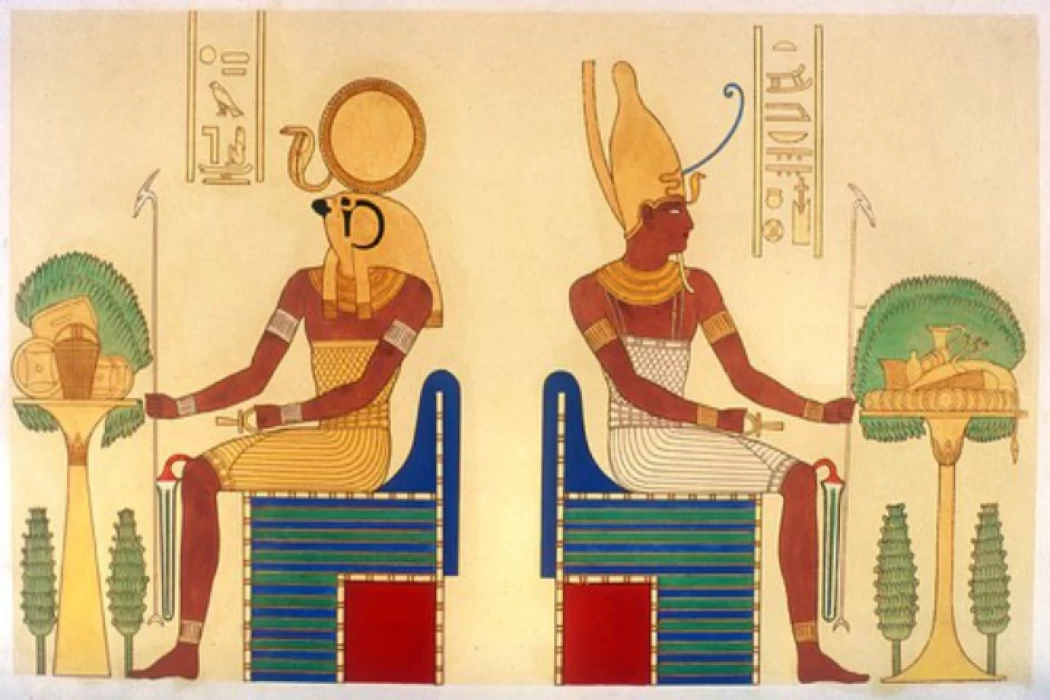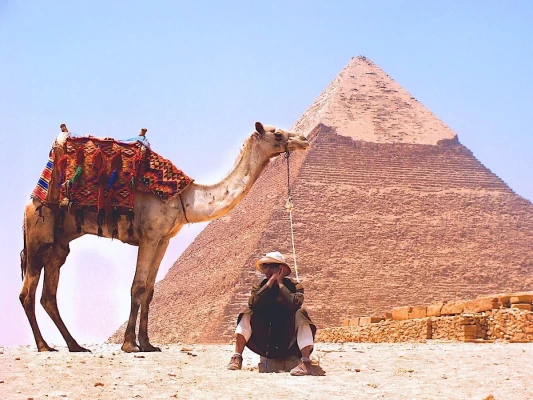
God Atum
Facts about God Atum
One of the features of Egypt's greatness and progress is that it knew the one God, sanctified Him and even approached Him and offered Him sacrifices. It took a sacred plant, bird or animal and considered Him as a symbol of the good that God gave to the people of Egypt.
The title of God who was called this Holy was not meant by the great God of the Creator of the Universe, but by a special God on certain matters of life, such as agriculture and fertility, nile and air, as a kind of gratitude and thanks to this sacred according to the ancient Egyptian belief.
The god Atom is one of the greatest local gods who worshipped in the delta and was united with the god Ra, called Atom Ra, King of the Universe, Atom was King of the Arps, first appearance of the Lord of the Sun in Heliopolis, Ain Shams, and is one of the oldest Egyptian idols.
Atom embodies the ephemeral hill itself, which emerged from the ephemeral ocean called "Noon," declaring the beginning of existence and creation, a stone called "Ben Ben," which has been sacred in Ain Shams since the beginning of historical times, and subsequently evolved into the Slams.
Atom appeared over the upper hill in the image of the idol "Ra" as the legendary bird called "Bennu", a cloth bird, and late texts indicate that Atom had embodied the upper hill itself. Atom was represented in the human body sitting on top of his throne, laying on his head the double crown, sometimes depicting in the snake body based on his ephemeral nature the anguish of a creator, or he might be depicted in the shape of a lion, a bull, or in the lizard body, as a snake body, holding the child's sun lord inside the disk, and his attachment to the sun.
God Atum is one of the nine main deities of the Egyptian city of Heliopolis, and one of the most important Egyptian gods in this mythology. Because he is the creator of the universe, Atum is also known as Atem, Items, Atum-Ra, or Tem.
In Egyptian mythology, his origin is described as the emergence of a god from the primordial ocean. Existing before creation, Atum was the one who would initiate creation, as he gave life to his two sons, Shu and Tefnut, who were the gods of air and moisture, respectively.
The ancient Egyptians depicted him as a bearded man wearing a double crown. Atum was the first Egyptian deity to be depicted in human form, as he replaced Imy-Uaf, a serpent god. After this, Atum began his work of creation.
When depicted as a sun god, he wore the head of a ram, a phoenix, or a mongoose; on other occasions, he was depicted as a serpent, emerging from the primordial waters and renewing himself daily.
Also considered a sun god, he was linked to the god Amun Ra, who was the sun god. Atum represented the evening sun. Along with Ra and Khepri, they formed the triad of sun gods, Ra representing the god of midday and Khepri representing the sun goddess of dawn.
His role as a creator god connects him to all the gods, since, according to mythology, he was the one who initiated the creation of all the gods, including the rest of the Egyptian gods. From their children, Shu and Tefnut, Geb and Nut, the gods of the earth and sky, were born.
In turn, from the union of Geb and Nut, were born the other gods who would complete the ennead of Heliopolis, among them Isis, Nephthys, Osiris, Seth and Horus.
The name Atum means complete or perfect, and the ancient Egyptians believed that he created himself from himself on the top of the eternal hill, and who is the creator of the world, and he merged with the god Ra and was known as Atum Ra. The seat of his worship was in Ain Shams in the thirteenth district.
The importance of Atum and his relationship with the king continued throughout ancient history, as confirmed by texts from a papyrus dating back to the late period, currently preserved in the Brooklyn Museum... This papyrus refers to the importance of the god and his role in the festival marking the beginning of the year, which reaffirms the role of the king.
Atum, the creator god, was the ultimate source of royal power and authority, which was transferred to the deity Horus, the king... The title "Father of the King of Egypt" was bestowed upon Atum. The Book of the Dead's Chapter 148 describes the deceased's wish to remain near Atum in order to get power from him (and become strong in Atum's presence). In later times, some amulets in the shape of a lizard were hung around the neck as symbols of this deity.















